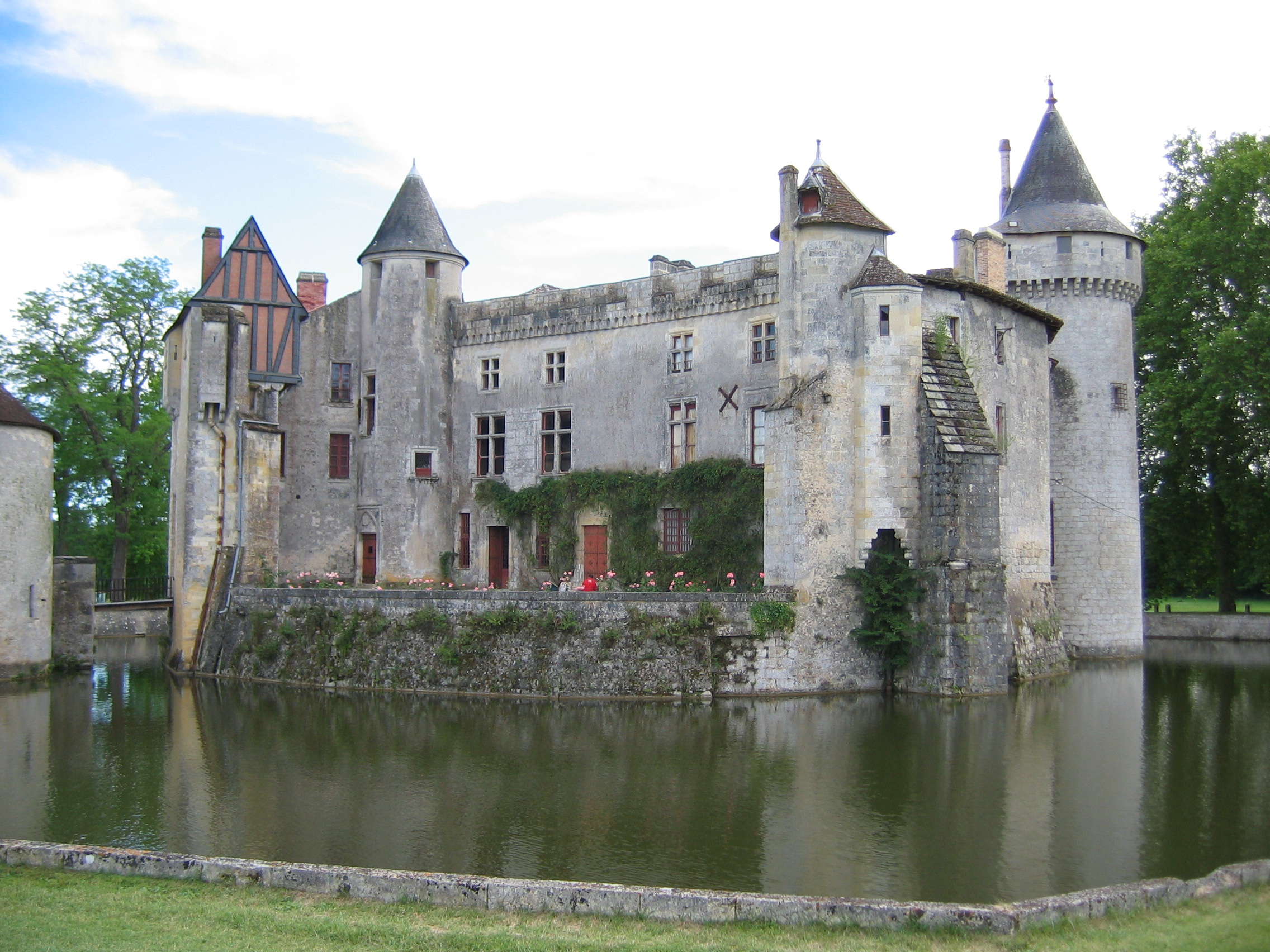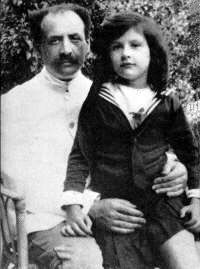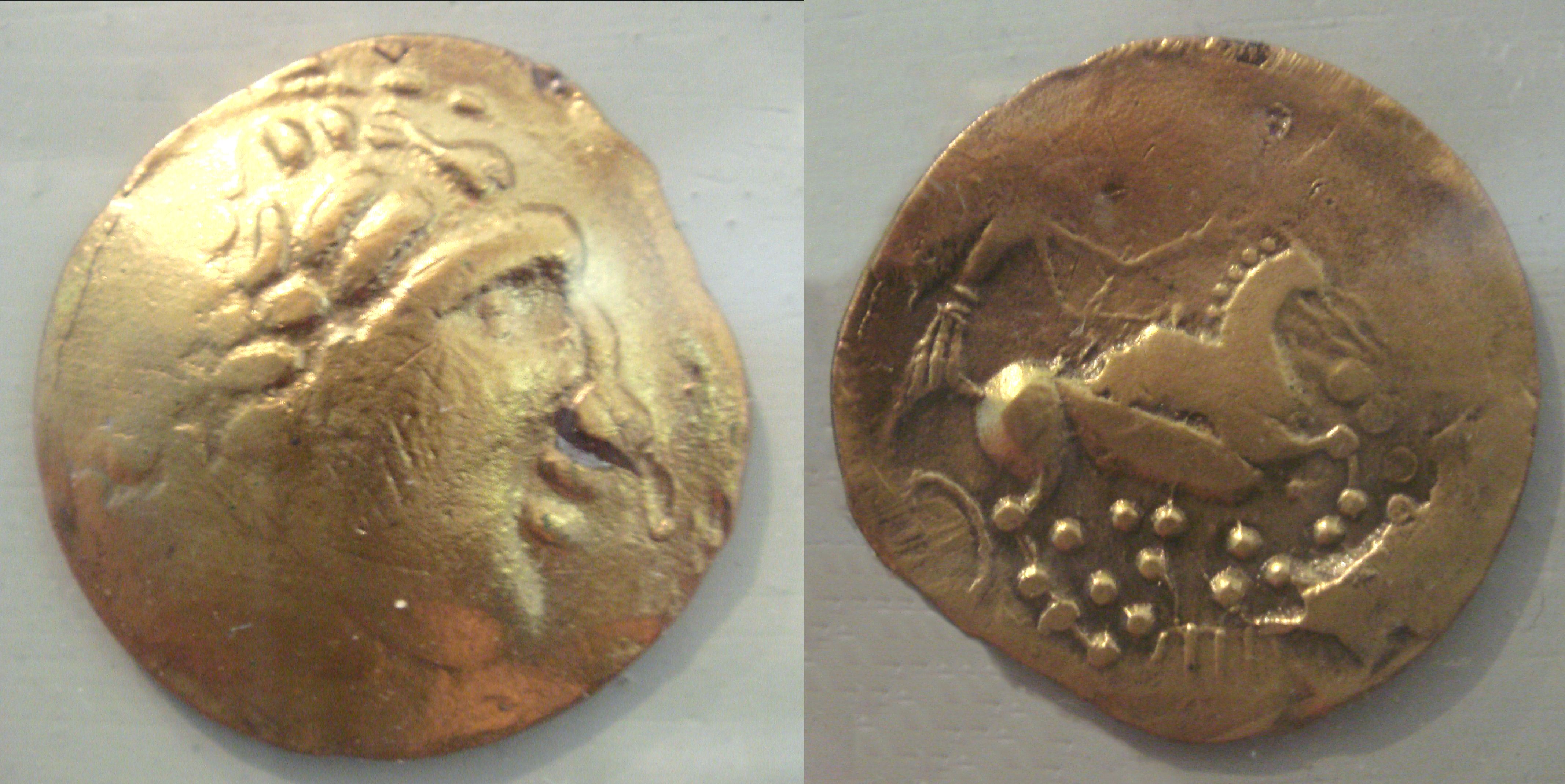|
Véronique Filozof
Véronique Filozof (8 August 1904 – 12 January 1977) was a Swiss-born French painter, illustrator, and muralist. Biography Filozof was born Véréna Valérie Sandreuter in Basel on 8 August 1904. Her father Rudolf Sandreuter was a blacksmith and musician, and her great-uncle was the painter Hans Sandreuter. Filozof was educated at the School of Fine Arts in Basel alongside her sister Élisabeth and her brother Hans. in 1922, Filozof moved to Troyes in order to improve her French. The following year, in 1923, Filozof married Paul Modin, a school administrator. Filozof and Modin lived in Mulhouse and had two children Paulette and Jean-Guy, before divorcing in 1937. In 1940, Filozof married Georges Filozof (1896–1974), a mining engineer of Polish descent. Following the German Occupation of France in June 1940, Filozof fled Mulhouse with her husband and children to Elne, where she became involved with Swiss Red Cross efforts at . In 1941, Filozof moved to Sarlat-la-Ca ... [...More Info...] [...Related Items...] OR: [Wikipedia] [Google] [Baidu] |
Basel
Basel ( ; ), also known as Basle ( ), ; ; ; . is a city in northwestern Switzerland on the river Rhine (at the transition from the High Rhine, High to the Upper Rhine). Basel is Switzerland's List of cities in Switzerland, third-most-populous city (after Zurich and Geneva), with 177,595 inhabitants within the city municipality limits. The official language of Basel is Swiss Standard German and the main spoken language is the local Basel German dialect. Basel is commonly considered to be the cultural capital of Switzerland and the city is famous for its many Museums in Basel, museums, including the Kunstmuseum Basel, Kunstmuseum, which is the first collection of art accessible to the public in the world (1661) and the largest museum of Swiss art, art in Switzerland, the Fondation Beyeler (located in Riehen), the Museum Tinguely and the Museum of Contemporary Art (Basel), Museum of Contemporary Art, which is the first public museum of contemporary art in Europe. Forty museums ... [...More Info...] [...Related Items...] OR: [Wikipedia] [Google] [Baidu] |
George Besson
George Besson (25 December 1882 – 19 June 1971) was a French art critic, and the founder and director of ''Cahiers d'Aujourd'hui''. His wife Adèle was the subject of Pierre-Auguste Renoir's ''Portrait of Adèle Besson'', and he was the subject of Pierre Bonnard's ''Portrait de George Besson''., amongst other pieces. In 1971 the Bessons donated their art collection to the French state, the musée de Besançon and the musée Albert-André in Bagnols-sur-Cèze Bagnols-sur-Cèze (, "Bagnols-on-Cèze"; ) is a Communes of France, commune in the Gard Departments of France, department in the Occitania (administrative region), Occitania Regions of France, region in Southern France. History A small regiona .... References French art critics 1882 births 1971 deaths French male writers 20th-century French male writers {{France-nonfiction-writer-stub ... [...More Info...] [...Related Items...] OR: [Wikipedia] [Google] [Baidu] |
Antoine De Saint Exupéry
Antoine is a French given name (from the Latin ''Antonius'' meaning 'highly praise-worthy') that is a variant of Danton, Titouan, D'Anton and Antonin. The name is most common in France, Switzerland, Belgium, Canada, West Greenland, Haiti, French Guiana, Madagascar, Benin, Niger, Burkina Faso, Ivory Coast, Guinea, Senegal, Mauritania, Western Sahara, Morocco, Algeria, Tunisia, Chad, Central African Republic, Cameroon, Equatorial Guinea, Gabon, Republic of the Congo, Democratic Republic of the Congo, Burundi, and Rwanda. It is a cognate of the masculine given name Anthony. Similar names include Antaine, Anthoine, Antoan, Antoin, Antton, Antuan, Antwain, Antwan, Antwaun, Antwoine, Antwone, Antwon and Antwuan. Feminine forms include Antonia, Antoinette, and (more rarely) Antionette. As a first name *Antoine Alexandre Barbier (1765–1825), a French librarian and bibliographer *Antoine Arbogast (1759–1803), a French mathematician *Antoine Arnauld (1612–1694), a French ... [...More Info...] [...Related Items...] OR: [Wikipedia] [Google] [Baidu] |
Montesquieu
Charles Louis de Secondat, baron de La Brède et de Montesquieu (18 January 168910 February 1755), generally referred to as simply Montesquieu, was a French judge, man of letters, historian, and political philosopher. He is the principal source of the theory of separation of powers, which is implemented in many constitutions throughout the world. He is also known for doing more than any other author to secure the place of the word ''despotism'' in the political lexicon.. His anonymously published '' The Spirit of Law'' (1748), which was received well in both Great Britain and the American colonies, influenced the Founding Fathers of the United States in drafting the U.S. Constitution. Biography Montesquieu was born at the Château de la Brède in southwest France, south of Bordeaux. His father, Jacques de Secondat (1654–1713), was a soldier with a long noble ancestry, including descent from Richard de la Pole, Yorkist claimant to the English crown. His mother, Mari ... [...More Info...] [...Related Items...] OR: [Wikipedia] [Google] [Baidu] |
Jean Cocteau
Jean Maurice Eugène Clément Cocteau ( , ; ; 5 July 1889 11 October 1963) was a French poet, playwright, novelist, designer, film director, visual artist and critic. He was one of the foremost avant-garde artists of the 20th-century and hugely influential on the surrealist and Dadaist movements, among others. The National Observer (United States), ''National Observer'' suggested that "of the artistic generation whose daring gave birth to Twentieth Century Art, Cocteau came closest to being a Renaissance man". He is best known for his novels (1923), (1928), and (1929); the stage plays (1930), (1934), (1938), (1941), and (1946); and the films ''The Blood of a Poet'' (1930), (1948), ''Beauty and the Beast (1946 film), Beauty and the Beast'' (1946), ''Orpheus (film), Orpheus'' (1950), and ''Testament of Orpheus'' (1960), which alongside ''Blood of a Poet'' and ''Orpheus'' constitute the so-called Orphic Trilogy. He was described as "one of [the] avant-gard ... [...More Info...] [...Related Items...] OR: [Wikipedia] [Google] [Baidu] |
Aristote
Aristotle (; 384–322 BC) was an Ancient Greek philosophy, Ancient Greek philosopher and polymath. His writings cover a broad range of subjects spanning the natural sciences, philosophy, linguistics, economics, politics, psychology, and the arts. As the founder of the Peripatetic school of philosophy in the Lyceum (classical), Lyceum in Athens, he began the wider Aristotelianism, Aristotelian tradition that followed, which set the groundwork for the development of modern science. Little is known about Aristotle's life. He was born in the city of Stagira (ancient city), Stagira in northern Greece during the Classical Greece, Classical period. His father, Nicomachus (father of Aristotle), Nicomachus, died when Aristotle was a child, and he was brought up by a guardian. At around eighteen years old, he joined Plato's Platonic Academy, Academy in Athens and remained there until the age of thirty seven (). Shortly after Plato died, Aristotle left Athens and, at the request ... [...More Info...] [...Related Items...] OR: [Wikipedia] [Google] [Baidu] |
Johann Wolfgang Von Goethe
Johann Wolfgang (von) Goethe (28 August 1749 – 22 March 1832) was a German polymath who is widely regarded as the most influential writer in the German language. His work has had a wide-ranging influence on Western literature, literary, Political philosophy#European Enlightenment, political, and Western philosophy, philosophical thought in the Western world from the late 18th century to the present.. A poet, playwright, novelist, scientist, statesman, theatre-director, and critic, Johann Wolfgang von Goethe bibliography, his works include plays, poetry and aesthetic criticism, as well as treatises on botany, anatomy, and colour. Goethe took up residence in Weimar in 1775 following the success of his first novel, ''The Sorrows of Young Werther'' (1774), and joined a thriving intellectual and cultural environment under the patronage of Duchess Anna Amalia of Brunswick-Wolfenbüttel, Duchess Anna Amalia that formed the basis of Weimar Classicism. He was ennobled by Karl August, G ... [...More Info...] [...Related Items...] OR: [Wikipedia] [Google] [Baidu] |
Simone Weil
Simone Adolphine Weil ( ; ; 3 February 1909 – 24 August 1943) was a French philosopher, mystic and political activist. Despite her short life, her ideas concerning religion, spirituality, and politics have remained widely influential in contemporary philosophy. She was born in Paris to an Alsatian Jewish family. Her elder brother, André, would later become a renowned mathematician. After her graduation from formal education, Weil became a teacher. She taught intermittently throughout the 1930s, taking several breaks because of poor health and in order to devote herself to political activism. She assisted in the trade union movement, taking the side of the anarchists known as the Durruti Column in the Spanish Civil War. During a twelve-month period she worked as a labourer, mostly in car factories, so that she could better understand the working class. Weil became increasingly religious and inclined towards mysticism as her life progressed. She died of heart failure in ... [...More Info...] [...Related Items...] OR: [Wikipedia] [Google] [Baidu] |
Façade
A façade or facade (; ) is generally the front part or exterior of a building. It is a loanword from the French language, French (), which means "frontage" or "face". In architecture, the façade of a building is often the most important aspect from a design standpoint, as it sets the tone for the rest of the building. From the engineering perspective, the façade is also of great importance due to its impact on Efficient energy use, energy efficiency. For historical façades, many local zoning regulations or other laws greatly restrict or even forbid their alteration. Etymology The word is a loanword from the French , which in turn comes from the Italian language, Italian , from meaning 'face', ultimately from post-classical Latin . The earliest usage recorded by the ''Oxford English Dictionary'' is 1656. Façades added to earlier buildings It was quite common in the Georgian architecture, Georgian period for existing houses in English towns to be given a fashionable new f ... [...More Info...] [...Related Items...] OR: [Wikipedia] [Google] [Baidu] |
Bordeaux
Bordeaux ( ; ; Gascon language, Gascon ; ) is a city on the river Garonne in the Gironde Departments of France, department, southwestern France. A port city, it is the capital of the Nouvelle-Aquitaine region, as well as the Prefectures in France, prefecture of the Gironde department. Its inhabitants are called "''Bordelais'' (masculine) or "''Bordelaises'' (feminine). The term "Bordelais" may also refer to the city and its surrounding region. The city of Bordeaux proper had a population of 259,809 in 2020 within its small municipal territory of , but together with its suburbs and exurbs the Bordeaux Functional area (France), metropolitan area had a population of 1,376,375 that same year (Jan. 2020 census), the sixth-most populated in France after Paris, Lyon, Marseille, Lille, and Toulouse. Bordeaux and 27 suburban municipalities form the Bordeaux Métropole, Bordeaux Metropolis, an Indirect election, indirectly elected Métropole, metropolitan authority now in charge of wi ... [...More Info...] [...Related Items...] OR: [Wikipedia] [Google] [Baidu] |
Bas-relief
Relief is a sculptural method in which the sculpted pieces remain attached to a solid background of the same material. The term ''relief'' is from the Latin verb , to raise (). To create a sculpture in relief is to give the impression that the sculpted material has been raised above the background plane. When a relief is carved into a flat surface of stone (relief sculpture) or wood ( relief carving), the field is actually lowered, leaving the unsculpted areas seeming higher. The approach requires chiselling away of the background, which can be time-intensive. On the other hand, a relief saves forming the rear of a subject, and is less fragile and more securely fixed than a sculpture in the round, especially one of a standing figure where the ankles are a potential weak point, particularly in stone. In other materials such as metal, clay, plaster stucco, ceramics or papier-mâché the form can be simply added to or raised up from the background. Monumental bronze reliefs are ... [...More Info...] [...Related Items...] OR: [Wikipedia] [Google] [Baidu] |
Aurelie Nemours
Aurelie Nemours (29 October 1910 – 27 January 2005) was a French painter who made abstract geometrical paintings and was highly influenced by De Stijl, or neoplasticism. Biography Aurelie Nemours was born 29 October 1910 in Paris, France. In 1929 she enrolled in the École du Louvre. In 1936, she married Auguste Nemours. In 1941 Nemours attended to the Andre Lhote Academy. In 1945, she began writing poetry. While for the first time at the Salon of Sacred Art she exhibited in 1946 until 1979. Nemours established her style in 1949 she then used her form of media to conduct research on the interplay of lines and their relationship to colored surfaces, angles, the point of geometric shapes, horizontal and vertical. From 1949 through 1992 Nemours participated in the Salon des Réalités Nouvelles. In 1950, ''Midi la lune'', her collection of poems was published. In the late 1950s Nemours traveled to Haiti. Nemours exhibited at a variety of venues culminating in a retrospe ... [...More Info...] [...Related Items...] OR: [Wikipedia] [Google] [Baidu] |








